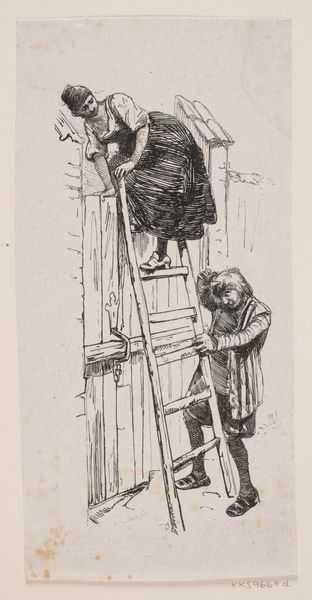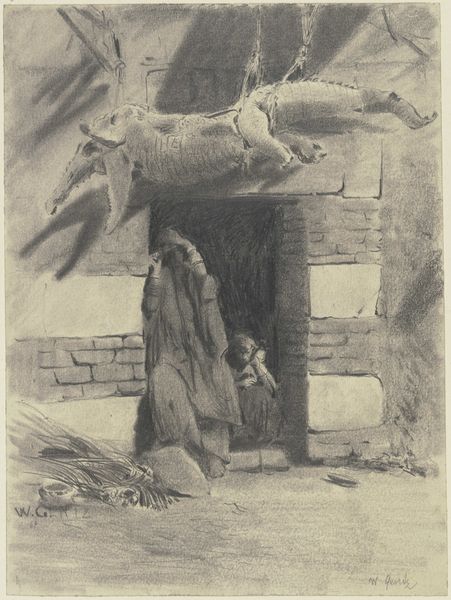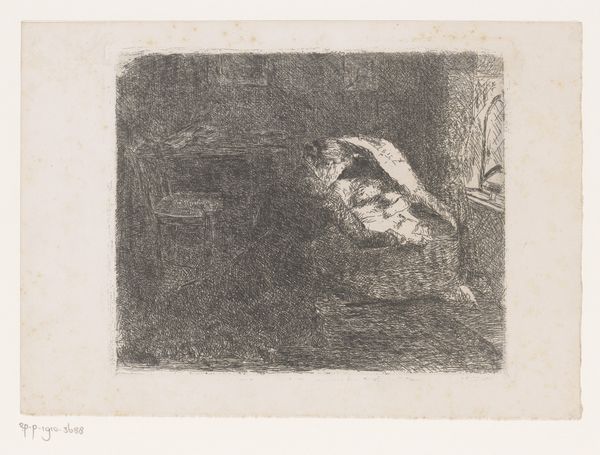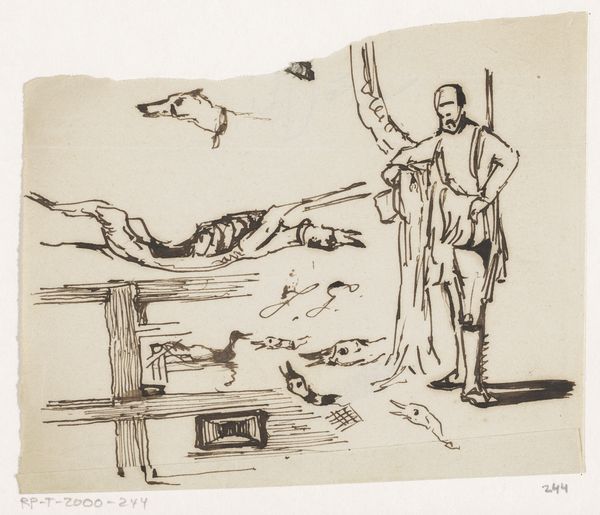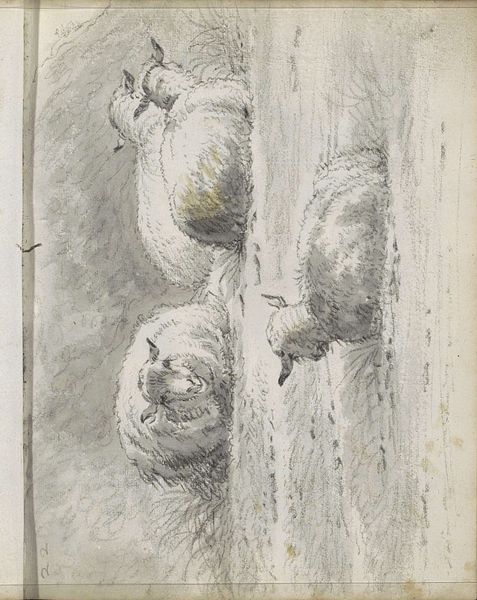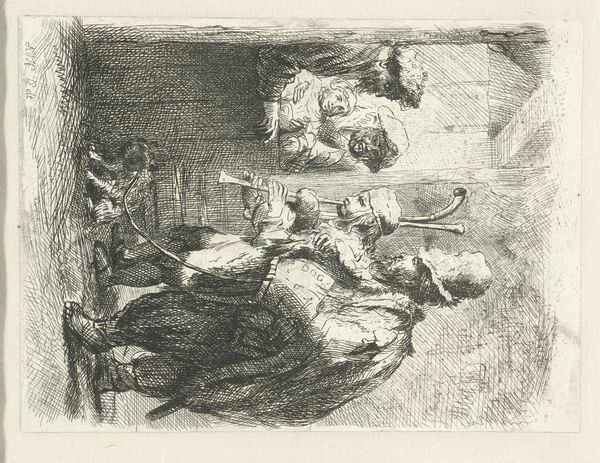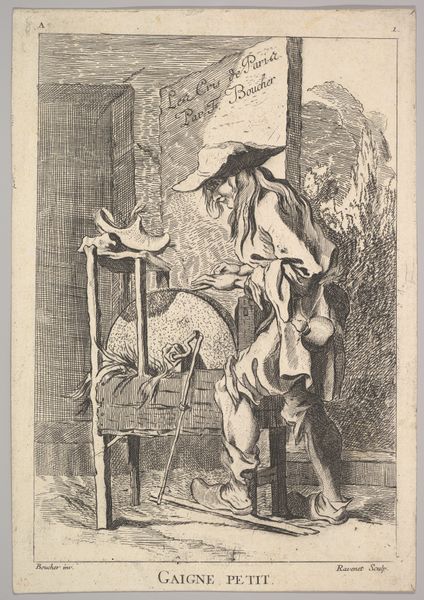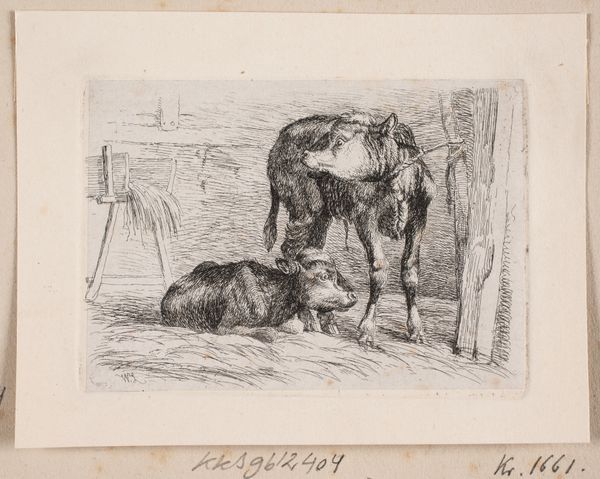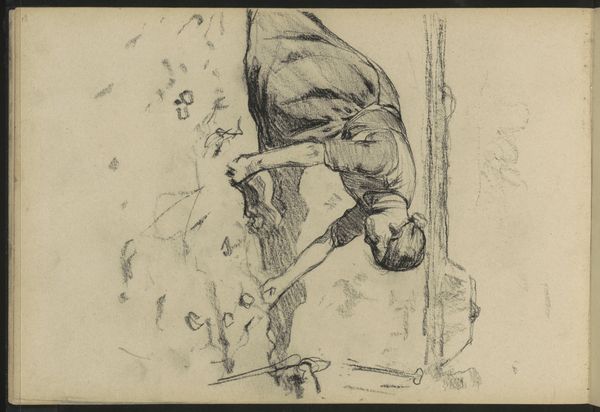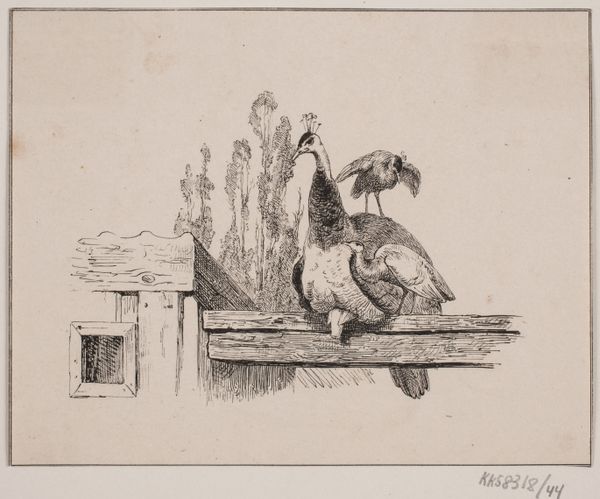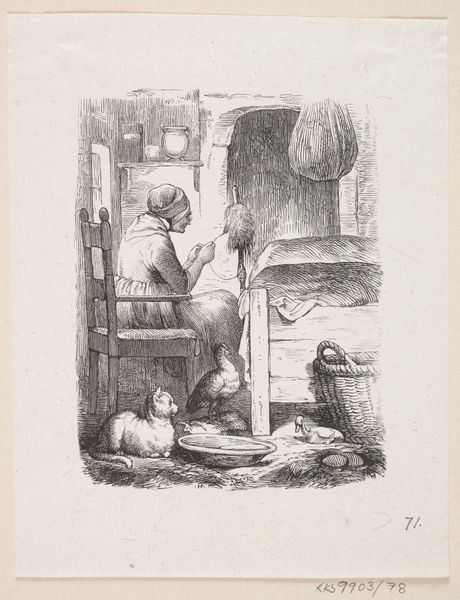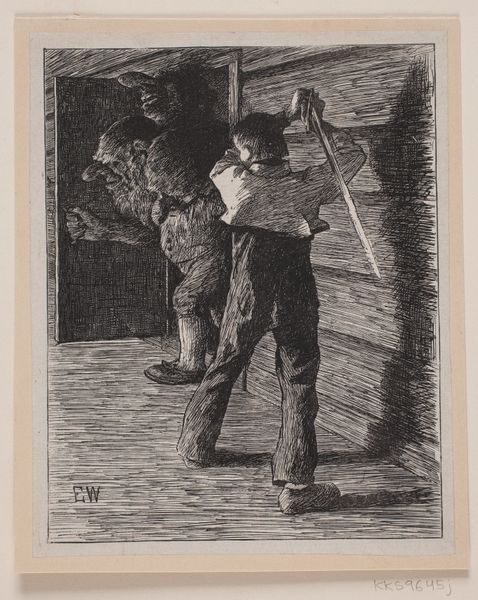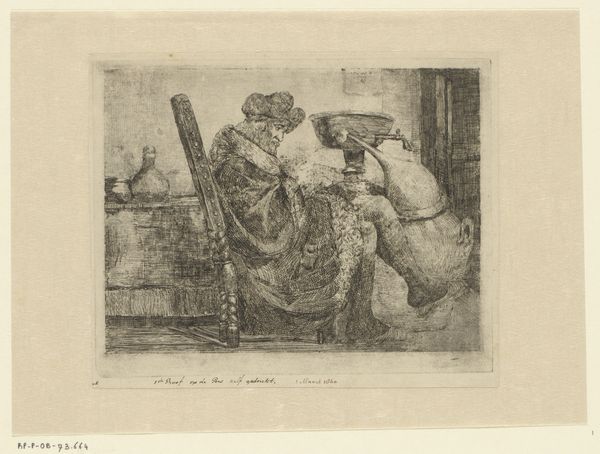
drawing, lithograph, print, graphite
#
drawing
#
lithograph
# print
#
sketchwork
#
graphite
#
realism
Dimensions: 97 mm (height) x 126 mm (width) (bladmaal)
Adolph Kittendorff made this print, "Duerne," using etching, a process that democratized image-making in the 19th century. An etching begins with a metal plate covered in a waxy ground. The artist scratches through this ground, exposing the metal, which is then submerged in acid. The acid bites into the exposed lines, creating grooves that will hold ink. The plate is then inked, wiped clean, and pressed onto paper, transferring the image. The fine lines and intricate details here highlight both the artist's skill and the relative ease with which etching can reproduce complex scenes. This technique enabled a wider audience to access art, breaking down traditional hierarchies. Consider the labor involved: the careful preparation of the plate, the precise drawing, the chemical process of etching, and the final printing. Kittendorff's print exemplifies how new technologies transformed art production and consumption, blurring the lines between craft, industry, and art.
Comments
No comments
Be the first to comment and join the conversation on the ultimate creative platform.
